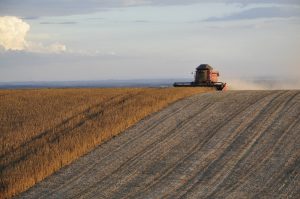Posted on December 23, 2022 by Smita Narula
Industrial food systems are responsible for one-third of greenhouse gas emissions and are a key driver of deforestation and biodiversity loss, threatening more than 85 percent of the 28,000 species at risk of extinction. But the relationship between food systems and environmental degradation has only recently taken center-stage at global environmental summits.
In November 2022 world leaders gathered in Sharm el-Sheikh, Egypt for the 27th Conference of Parties (COP27) to the United Nations Framework Convention on Climate Change (UNFCCC). With more than 200 events, four pavilions, and a day dedicated to agriculture, COP27 was billed as the “first food COP.” Some progress was made, including a deal to integrate agriculture into the work of the UNFCCC.
But as attention to agriculture grew, so did the presence of agribusiness actors whose lobbying helped ensure that the food and farming initiatives that came out of the global climate summit fell far short of transformative food systems change. Instead, COP27 offered a suite of technical “solutions”—from fixing cow burps, to using drones for “precision agriculture,” to increasing access to fossil fuel-based fertilizers—that did more to perpetuate environmentally disastrous industrial food systems than transform them.
Critics also decried the relative lack of attention to the voices and solutions offered by smallholder farmers, the majority of whom are women and who suffer disproportionately from food insecurity and climate change. Yet their calls to shift to agroecological food systems and ensure greater climate financing to help farmers adapt to droughts and floods were largely ignored.
Although the “first food COP” fell short of delivering an effective and inclusive food mandate, it did help make the case that our inter-related crises of climate change, food insecurity, and biodiversity loss cannot be solved without transforming our food systems. That same message was echoed this month at part two of the fifteenth global biodiversity conference (COP15) when world leaders, alongside plenty of lobbyists, gathered in Montreal to craft a new set of goals to halt biodiversity loss. Here too, food finally took center stage, and arguably to greater effect (on paper at least).
Among other targets, the Kunming-Montreal Global Biodiversity Framework (GBF) that emerged from COP15 calls on states to: protect 30% of Earth’s lands, oceans, coastal areas, and inland waters (while upholding Indigenous peoples’ rights); increase sustainable agricultural practices, including by using agroecological methods; reduce by half global food waste and the overall risk from pesticides; and reduce by $500 billion annually environmentally harmful subsidies—all by 2030.
These agreements, however, are non-binding, lack enforcement mechanisms, and are poorly funded. The GBF is also a sequel to the 2020 Aichi targets, none of which have been fully met. Still, the strong signals being sent from both global summits is that food systems transformation is essential to protecting planetary health.
It remains to be seen whether these signals will lead to meaningful and accelerated action. But whatever the pace of reform internationally, agrarian movements around the world are already bringing into view viable alternatives to our industrial food system—namely, diverse and small-scale agroecological food systems that, provided proper supports, have the potential to strengthen rural livelihoods, conserve biodiversity, increase carbon sequestration, and support global food production. These systems need political and financial backing.
According to one estimate, an annual investment of $300-350 billion will be needed to implement actions to transform food systems. But the vast majority of the $540 billion being spent annually on global food subsidies is geared toward agricultural practices that destroy the environment, fuel the climate crisis, and exacerbate inequality. With so much at stake, we simply cannot proceed with business as usual. The momentum is finally building to invest in a more sustainable and just food future. And smallholder farmers are leading the way.

